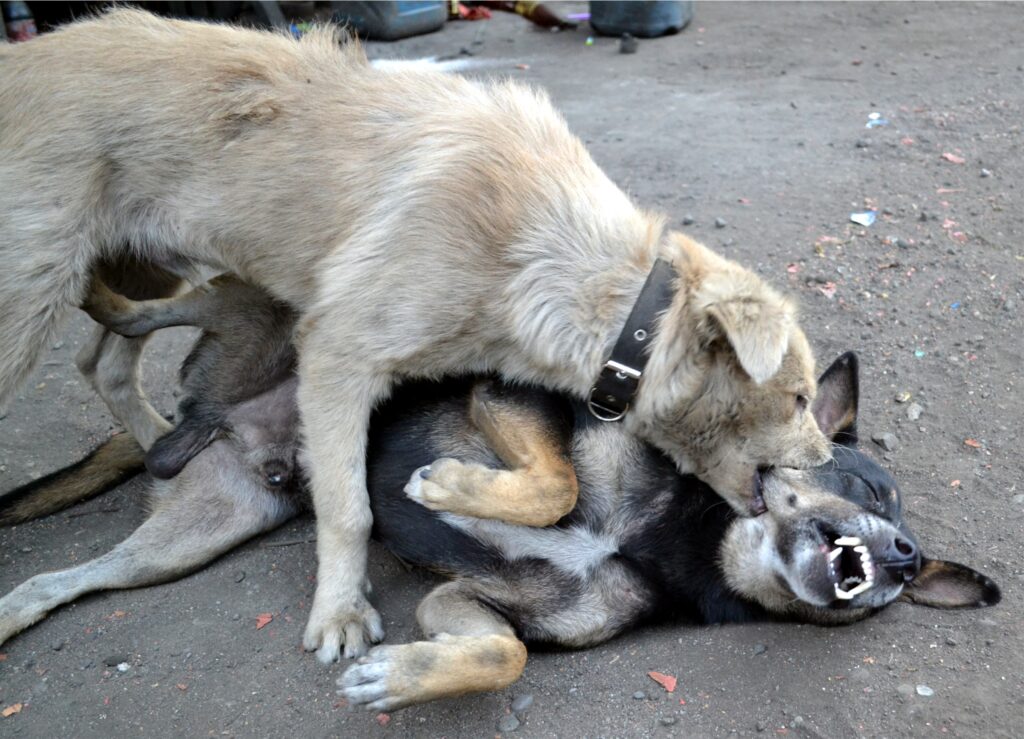Text and Photos by Henrylito D. Tacio
While Hong Kong, Japan, Singapore, and Taiwan are considered rabies-free, the disease continues to be a severe threat elsewhere in Asia. In the Philippines, for instance, rabies claims 400 people each year, according to the Geneva-based World Health Organization (WHO).
Health experts, however, fear the actual toll may be much higher. They believe the death toll could be higher because of the many deaths that go unreported in remote parts of the country.
In most parts of the country, surveillance of rabies is inadequate and not given priority compared with other infectious diseases like tuberculosis, malaria, and more recently, coronavirus disease 2019. In addition, there are not too many laboratories making rabies diagnoses.
The government has been implementing various control interventions to prevent the spread of the disease. In Davao City, mass vaccination of dogs has been implemented since 2006. In 2011, additional control interventions like impounding and neutering were also employed.
“But despite all these, the number of rabies cases continues to fluctuate,” reported Zython Paul T. Lachica and five others. They conducted a cointegration analysis of rabies cases and weather components in Davao City from 2006 to 2017. To think, “the Philippines aims to be rabies-free by 2022,” they said.
The dog is a man’s friend. But the animal can be deadly if it bites you, especially if the dog is not vaccinated. After all, dogs are one of the carriers of rabies, a viral infection of the brain.
Based on figures gathered by Lachica et al, about 635 dogs have been infected annually since 2012. In Davao City, most of the rabies cases were coming from dogs, although there some from cats. All in all, a total of 210 rabies-infected dogs were documented.
People almost always contract rabies from the saliva of rabid animals. Any warm-blooded animal can be infected, but dogs are by far the most common source. In fact, dogs are responsible for over 90 percent of rabies deaths in the country.
“The usual pattern of transmission is dog to dog and then from dog to human,” says Dr. Mary Elizabeth Miranda, one of the country’s top experts on rabies.
Children are at the greatest risk because they’re most likely to play with dogs. This has been confirmed by the United Nations health agency, which said that up to 60% of rabies cases occur in people less than 15 years of age.
Take the case of Edward. The lively eight-year-old was bitten by a puppy dog on his hand while playing with the three-month pet. The parents did not give any significance to the small tooth mark (as a result of the bite) and just cleaned the wound with antiseptic. They forgot the whole incident and never bothered to consult a doctor even when the puppy died five days after Edward was bitten.
Ten days after the biting incident, the boy developed a fever, and it was then that the parents brought the child to a doctor who prescribed some medicine. Two more days passed, and the boy started talking irrelevantly, looked confused, and became sleepless. The next day, he refused to take any water and even food. At this time, the parents brought him back to the hospital, where both the mother and father were interrogated. They told the biting incident.
The attending physician suspected rabies and offered the boy a glass of water. Just by looking at the glass of water, the boy went into spasms and looked terrified. “I feel pity staring at the little boy who’s suffering from an incurable malady just because he had played with a puppy,” the doctor lamented.
Though bites are the usual form of transmission, rabies can also be contracted if open wounds or mucous membranes in the eyes, nose, and mouth come into contact with saliva from a rabid animal or if an infected person kisses a partner.

Vaccinating a cat 
Dogfight
In rare cases, victims contract it from inhaling the air-borne virus – in caves inhabited by rabid bats, for example – or by drinking unpasteurized milk from a rabid animal.
But how can you tell if an animal is rabid? “A common clue is a sudden change of behavior, like drooling, unprovoked aggression, biting, aimless running and difficulty breathing,” says Dr. Silvius Alon, a veterinarian who once worked with a non-government organization based in Bansalan, Davao del Sur. However, some infected animals may become paralyzed or die suddenly without showing signs of illness.
If possible, any dog that bites a person should be confined and observed. “If the dog remains healthy for ten to 14 days, it’s safe to assume it’s rabies-free,” says Dr. Miranda. If the animal does show symptoms, the owner should contact the local health department or a veterinarian immediately, and the dog should be humanely put down.
In humans, rabies symptoms can take weeks or months to appear. This presents a real problem when treating the disease because by the time symptoms have developed; it may be too late to prevent death. When an infected animal bites a person, the virus travels along the nerves to the central nervous system, where it incubates for up to three months. In this period, the victim shows no signs of illness.
At the end of the incubation period, the virus multiplies rapidly, spreading to the brain and throughout the body, even to the eyes and extremities like hair follicles. Initial symptoms, in what doctors refer to as the “prodromal stage” of the disease, may be mild. They last from two to ten days and include a slight fever, headache, nausea, and persistent loose cough. There may be a pain, itching, tingling, or a cold sensation at the bite site.
Then, in the “acute neurological stage,” symptoms become more and more frightening. For the next two to seven days, the patient becomes nervous, agitated, restless and irritable, and may salivate excessively. As the virus replicates in the brain, the victim experiences eye problems (like enlargement of the pupils), weakness of the facial muscles, and hoarseness.
In one out of six cases, there’s hydrophobia – a fear of water. “In this stage, there are forceful, painful muscle spasms of the throat, which expel liquids administered orally,” says Dr. S.N. Madhusudana, associate professor of the Department of Neurovirology at the National Institute of Mental Health and Neuroscience in Bangalore, India.
Finally, the virus overwhelms the brain and central nervous system. The patient falls into a coma, becomes paralyzed, and dies.
What should you do if you’re bitten by a rabid animal? First, attend to the wound right away. “Wash it with plenty of soap and running tap water,” instructs Dr. Madhusudana. “Then apply an antiseptic like iodine or betadine to kill the virus.”
As soon as the wound has been cleaned, seek medical help. Victims must be immunized as soon as possible so that antibodies can develop before the virus incubates. The injection must be done into the bite sites to neutralize the virus.
Those bitten by animals that carry the rabies virus should receive “active” and “passive” immunization, whether the animal turns out to be infected or not. In the active form, a vaccine is injected daily for 14 to 30 days, and the patient’s immune system responds by producing antibodies.
When the course is finished, booster doses should be given after 10 and 20 days. In “passive” immunization, rabies immunoglobulin or antiserum should be administered to provide “ready-made” antibodies and another weapon to fight the infection.
Antiserum can either be of human (human rabies immunoglobulin – HRIG) or horse (equine rabies immunoglobulin – ERIG) origin. HRIG, produced from human blood products, is expensive. That’s why ERIG is recommended and used in Asia as the first line of defense. It’s just as safe and effective as the former but costs a tenth as much.
Serious allergic reactions to the rabies vaccine are rare during the series of five injections. However, some adverse reactions that a person may experience after receiving the vaccine include abdominal pain, itching, muscle aches, dizziness, and inflammation. These adverse reactions, however, can be managed with anti-inflammatory and antipyretic drugs.
If possible, any dog that bites a person should be confined and observed. “If the dog remains healthy for ten to 14 days, it’s safe to assume it’s rabies-free,” says Dr. Miranda. If the animal does show symptoms, the owner should contact the local health department or a vet immediately, and the dog should be humanely put down.
“Without timely treatment, rabies infection is 100 percent fatal,” pointed out Dr. Nancy Nazaire-Bermal, head of the clinical research and development of the Novartis Vaccines and Diagnostics. “Rabies is the best example of an illness in which prevention is better than cure, as it is a vaccine-preventable disease.”
Vaccinating pets and livestock can help prevent rabies too.
While the government can do this, the public also has a vital role in the educational campaign against rabies. “Parents must remind children to NEVER touch or feed stray dogs or cats,” advises Dr. Alon.
